Farah Pahlavi: the last queen of Iran who lost everything but hope
Categories: History
By Pictolic https://pictolic.com/article/farah-pahlavi-the-last-queen-of-iran-who-lost-everything-but-hope.htmlToday, some perceive Farah Pahlavi, the wife of the last Shah of Iran, Mohammad Reza Pahlavi, as a symbol of a secular country free from religious obscurantism. There are also many who consider her the personification of the tyranny and extravagance of the Iranian monarchy. Whatever it was— this woman, who survived not only her husband, but all her children, left a serious mark on history and is worthy of respect. Who was really the "last empress" of Iran?
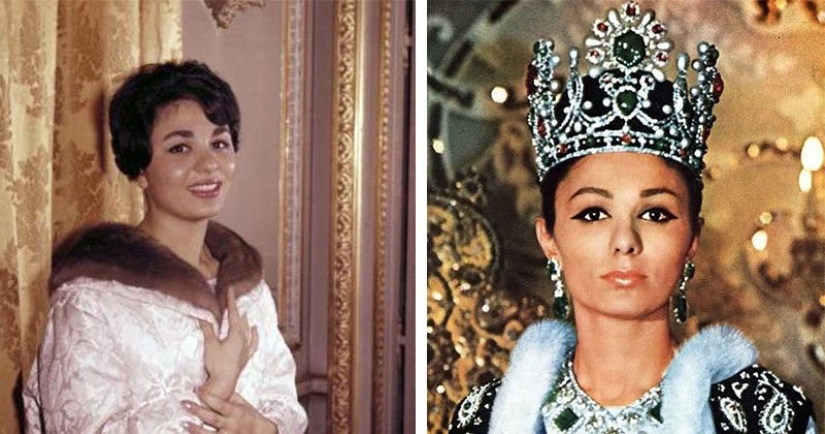
Farah Pahlavi turned 83 in 2022. She lives in the USA, in a small but luxuriously furnished apartment. She is surrounded by exquisite sculptures, paintings by famous masters and photographs of people dear to her who have been dead for a long time. The woman survived not only her husband, but also her daughter Leila and son Ali. She thinks about them every day, but she cannot afford to despair, because she lives for the sake of Iran and her people, from whom she was separated.
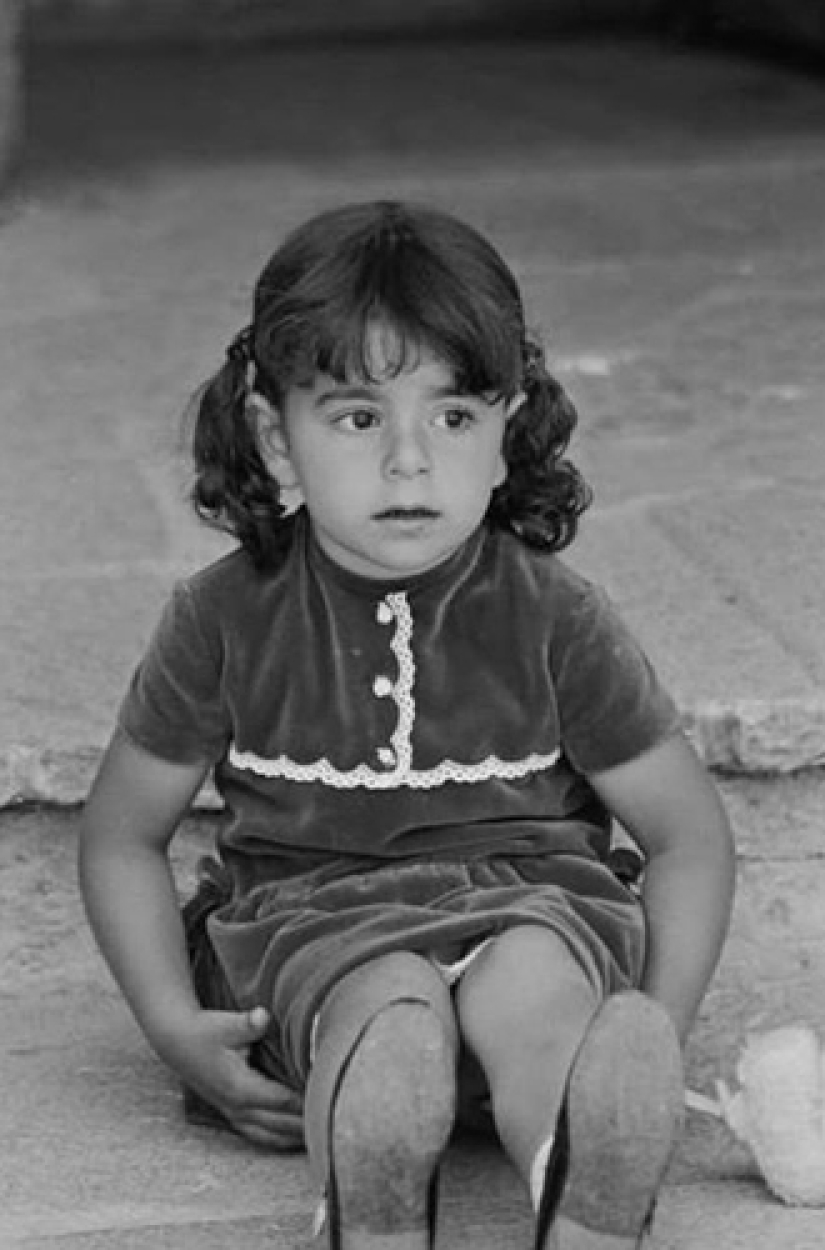
The future wife of the Iranian monarch Mohammad Reza Pahlavi, Farah Diba, was born in Tehran in 1938 in the family of an officer. Her father was the son of a famous diplomat who served the Russian emperors Romanov, and received an excellent education at the French military Academy Saint-Cyr.
The family belonged to the Iranian aristocracy and was considered one of the most respected in the country, so Farah had to match her position in society. The parents made sure that their daughter mastered the manners of a real lady and taught her French, history and literature.
The father did not want Farah to wear a hijab — he was a man of very progressive views and dreamed that his girl would receive a good education in France and find a worthy life partner there. Farah was afraid to disappoint her father from a very young age and tried her best to study and get better.
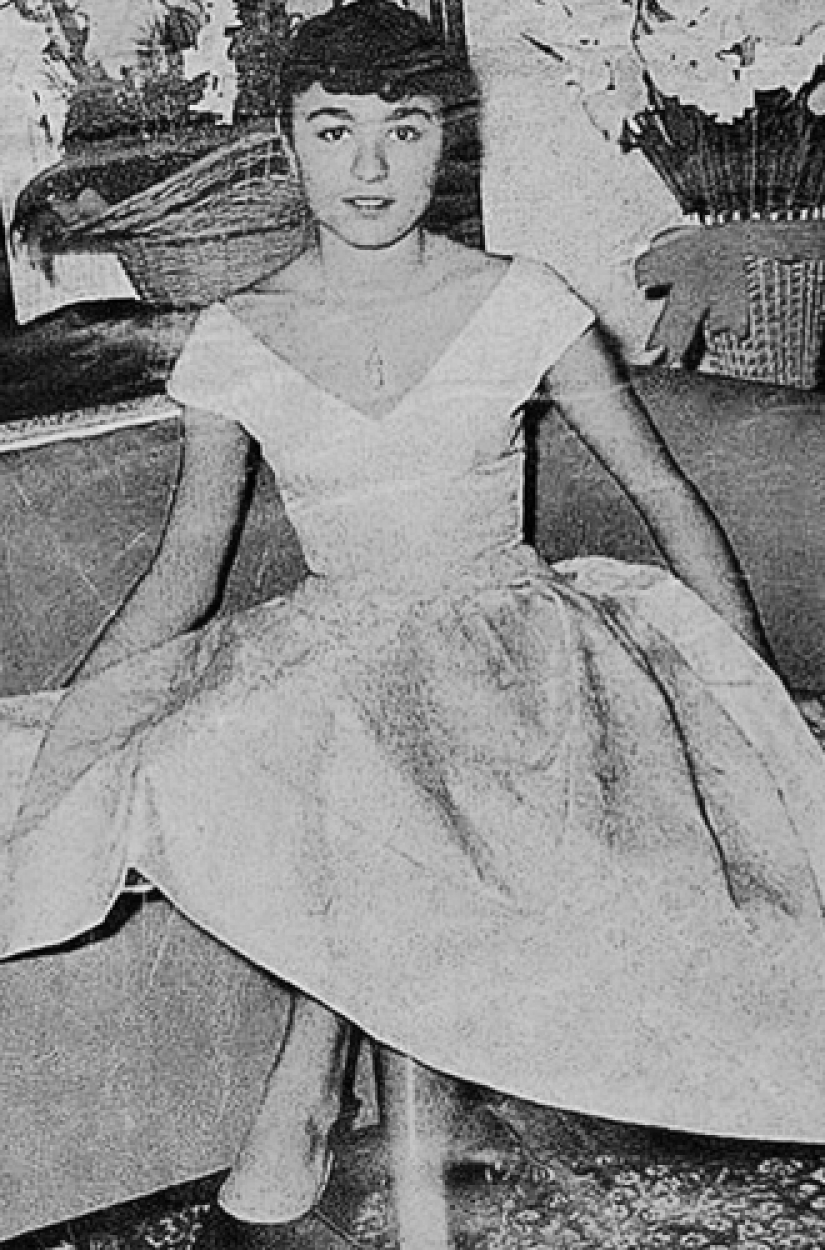
Farah Diba differed from her peers in intelligence and purposefulness, but at the same time she grew up friendly and cheerful. She studied at the Jeanne d'Arc School in Tehran, where she was known not only for her excellent academic performance, but also for her athletic achievements. Farah was seriously involved in basketball and even led the school team.
The smart, beautiful and athletic girl did not look down on others and was always ready to help her classmates. Therefore, the future shahini had no evil envious people and everyone loved her without exception. Teachers characterized Farah as a "hard worker" and a person with a fine mental organization.
After school, the girl decided to follow her father's will exactly and entered the Paris architectural Institute École Spéciale d'Architecture. This university was considered male, but it did not bother the brave Farah — she successfully passed all the entrance exams and rushed headlong into her studies.
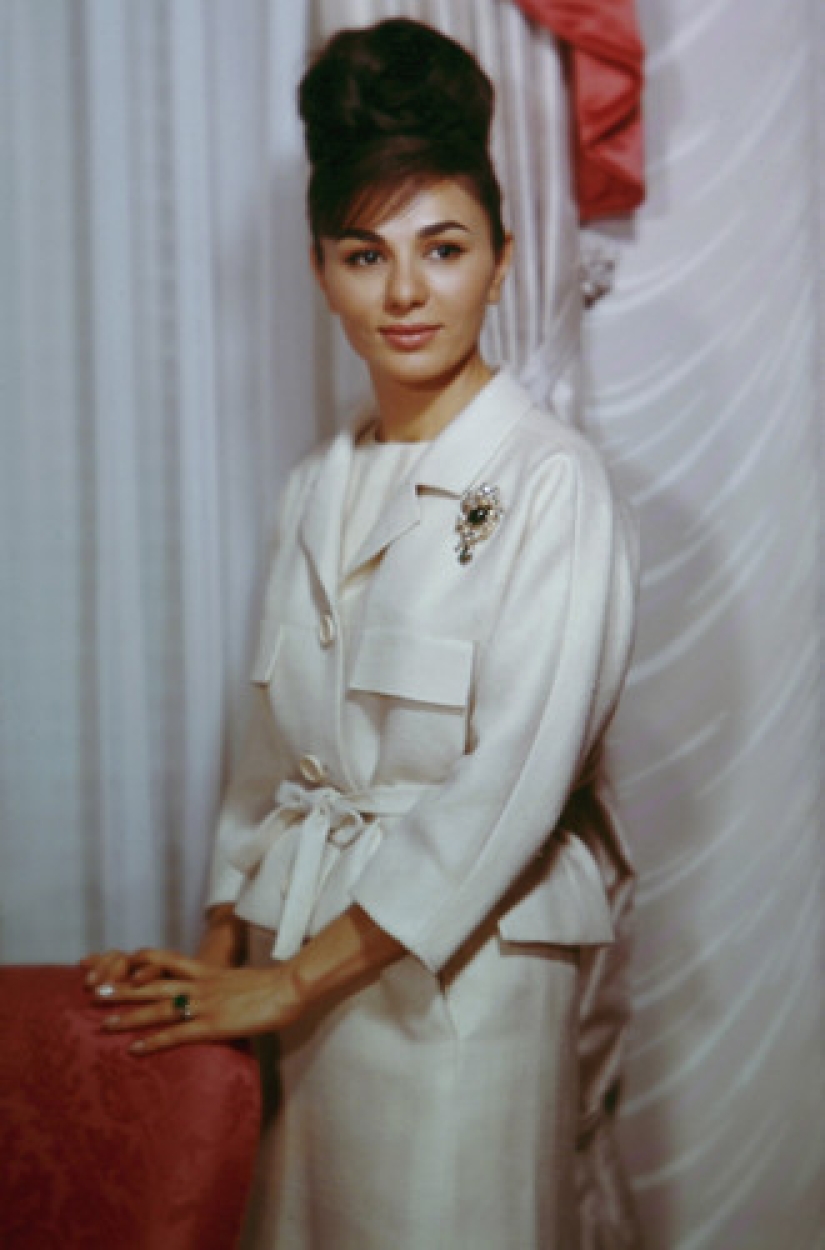
The study schedule at one of the best architectural institutes in Europe was incredibly busy, so the student allowed herself to rest only once. It was in 1959, when Shah Mohammad Reza Pahlavi, the ruler of her native country, arrived in Paris on an official visit.
Farah Diba was supposed to be among the chosen ones at the gala evening dedicated to the monarch at the Iranian embassy. Pahlavi was not married then — he had only separated from his wife Soraya for a year and was in search of a new wife. He wanted to find a woman who would be worthy to become the wife of the shah, and would also be able to give birth to his heir to the throne.
Before the event, classmates jokingly asked Farah: "Why doesn't the shah make you an offer? You're so smart and beautiful!" The girl laughed with her friends and could not even think how close this joke is to reality. She remembered it when she came face to face with the Shah.
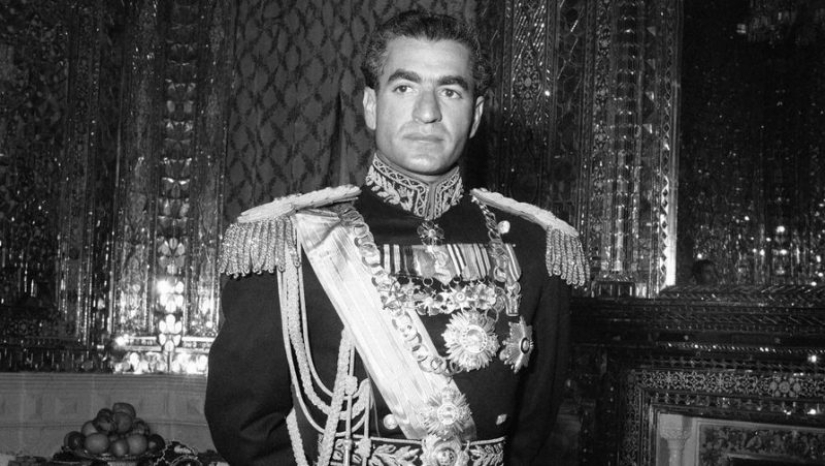
Farah came to the embassy in a black and white tweed suit with a camellia on the lapel, radiating modesty and charm. The girl stood out from the crowd of guests and the shah came up to talk to her. Mohammad Reza Pahlavi shook the young student's hand and asked about her academic progress. Farah was confused at first, but then she pulled herself together and answered the shah with a smile. The next day she described in a letter to her mother in a letter her impressions of the meeting:
Soon the girl forgot about this fleeting meeting and began to prepare for the session and summer holidays. She did not know that the shah had already thought everything over at that time and was preparing to propose to her. Later, Mohammed said that he immediately realized that in front of him was the one, the only one he wanted to see as his woman.
But in order not to frighten Farah, Mohammed began to act very delicately. First, the girl was invited to the house of Ardeshir Zahedi, a relative of the Shah and an official in charge of scholarships for Iranian students abroad. The girl thought that it would be about some kind of payments. As if by chance, Shah turned up at Zahedi's house and a short, meaningless conversation took place between him and Farah again.
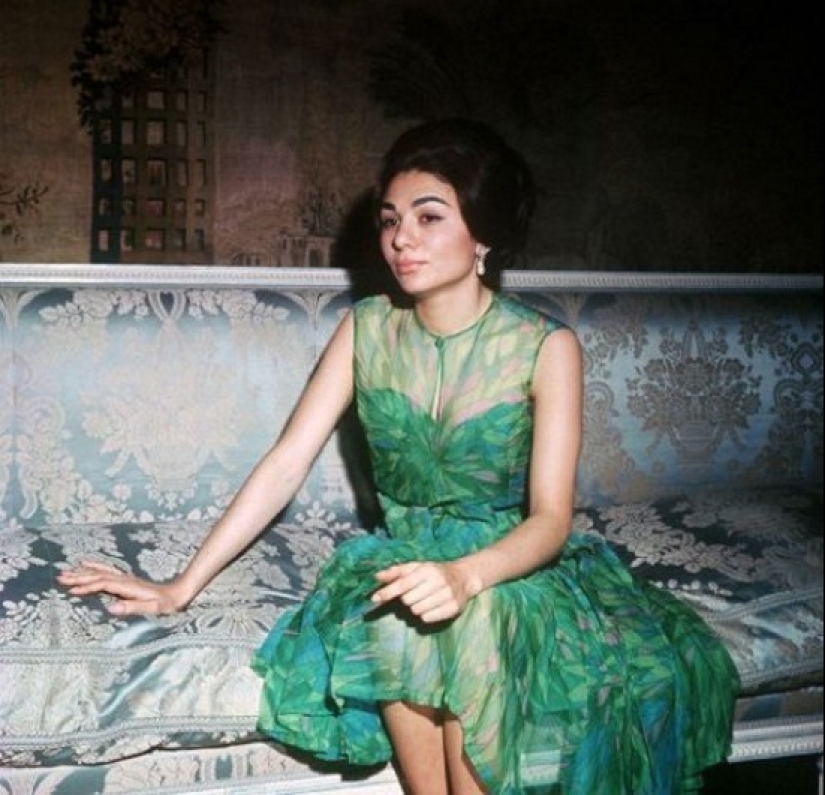
At that time, the girl did not suspect that the meeting was planned. But soon she was invited to dinner by the shah's daughter — after that, Farah had little doubt that meetings with a man like Mohammad Reza Pahlavi were not accidental. Therefore, when after dinner the ruler wanted to talk to her alone, the girl was mentally ready to be proposed to.
It all happened very simply - Mohammed said that he had been unhappily married twice and asked if Farah would agree to become his wife. The girl, without hesitation, said "Yes". They did not delay for a long time and the wedding was scheduled at the end of the same eventful year of 1959, on December 20.
The ceremony was very magnificent — the wedding dress was invented for the bride by Yves Saint Laurent himself, and it was sewn in Dior's atelier. The wedding tiara was ordered from the famous jeweler from the USA Harry Winston — there were 325 selected diamonds in it, and the total weight of the precious product was 2 kilograms.
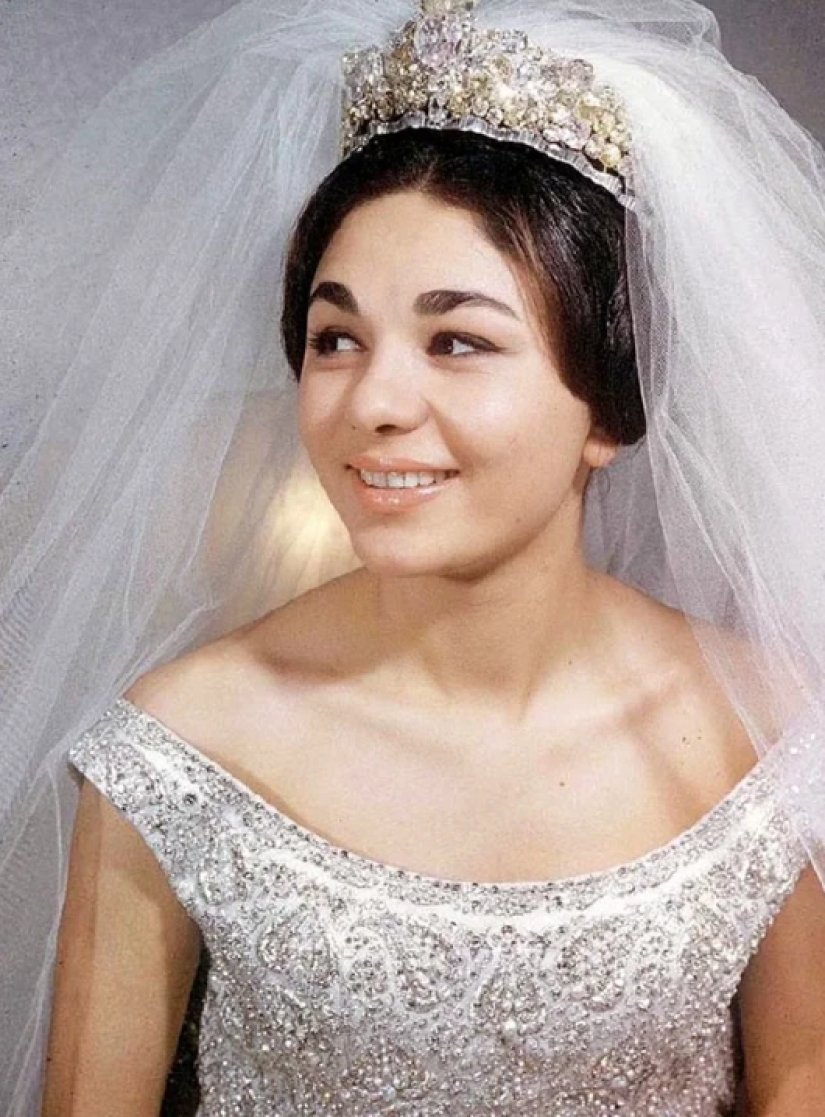
Not without incidents. Having already left with the motorcade to the groom, Farah remembered with horror that she had forgotten the groom's wedding ring at home. It was too late to return, so the bride was rescued by Ardeshir Zahedi, who accompanied her — he gave her his own wedding ring. There were no more overlaps, apart from the fact that the bride did not wait, according to custom, for a three-fold question about consent, but immediately answered "Yes".
After the wedding, the most difficult thing was coming. The girl had to stand up to the envious and gossips, of whom there are always a lot around princesses and queens. But Farah was a wise girl in her 20s and skillfully avoided conflicts and provocations. The dignified behavior of the young wife of the shah immediately raised her authority in the eyes of numerous relatives of the monarch who hold important government posts.
Unlike many other wives of monarchs, Farah was not just a companion of the Shah. Education allowed the young shahina to benefit the country in areas such as health and culture. But still, she understood that everyone expected from her not selfless service to the country, but the birth of the heir to the throne.
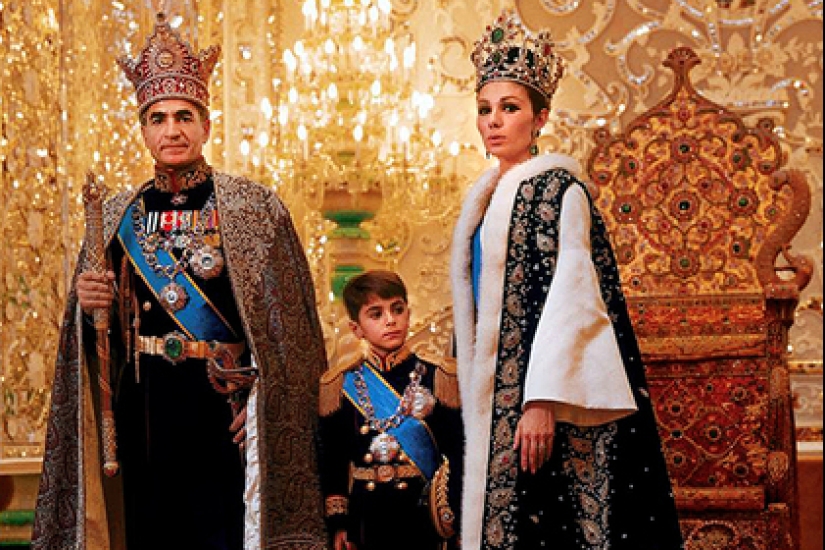
Mohammad Reza Pahlavi waited 20 years for the birth of his son and only his third wife, on October 31, 1960, gave him an heir. The birth took place not in an elite clinic, but in a hospital in one of the poorest districts of Tehran — so the Pahlavis showed the closeness of the royal family to the common people.
The people themselves took the appearance of the heir with delight, and the cunning move with the hospital for the poor moved thousands of Iranians to tears. Later, the shahina gave birth to three more little Pahlavis, thereby strengthening her position in the monarch's family.
After the birth of the heir, the heroine could consider that her main mission was accomplished and devote herself to what she passionately dreamed of - serving her country. The young queen did not forget to enjoy life to the fullest — she discovered in herself a passionate collector of works of art.
Her collection included works by recognized classics such as Renoir and Pollock, as well as paintings of rising stars, whom she unmistakably identified, thanks to impeccable taste. The value of the shahini collection is now estimated by experts at $ 3 billion.
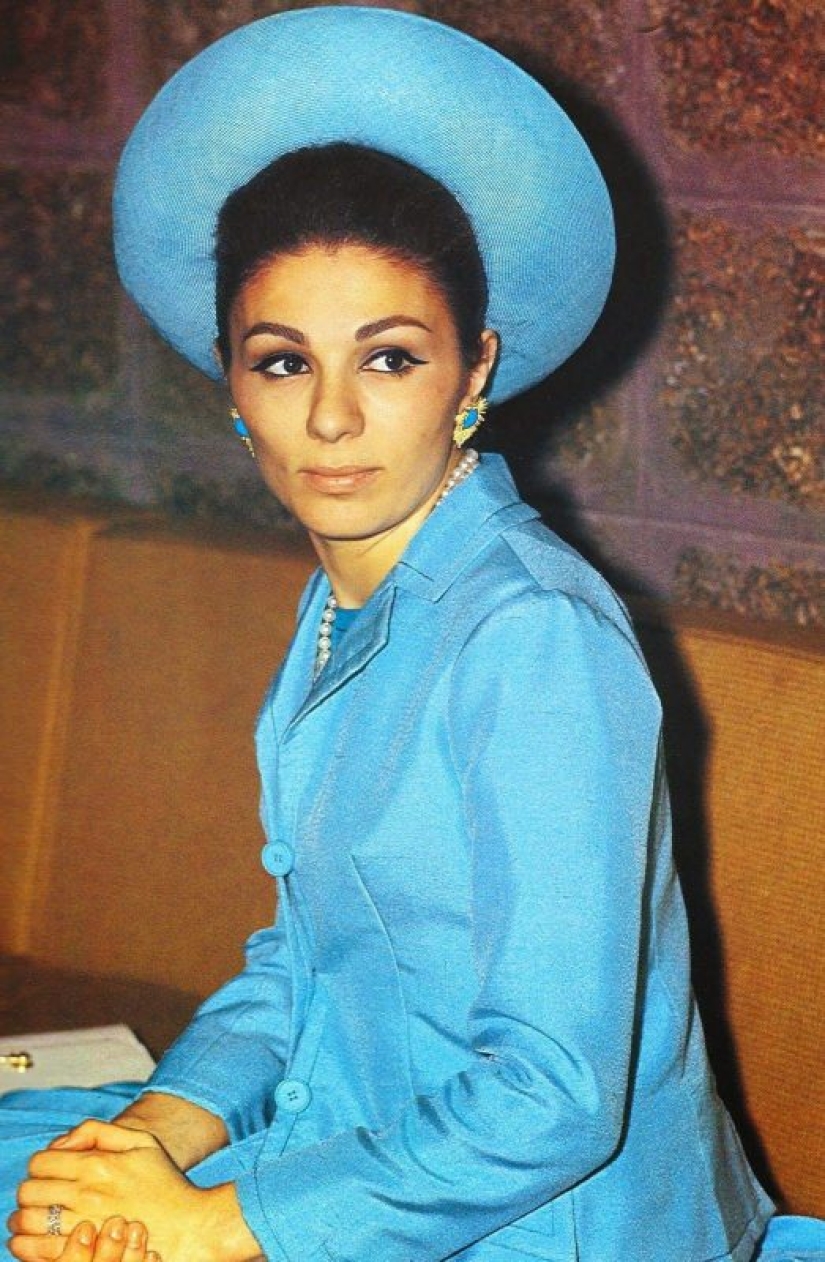
The shah's wife always dressed impeccably, could hold a conversation in several languages and was an ardent defender of women's rights. Foreign journalists called Farah the "Eastern Jackie Kennedy" and closely followed her every action. She achieved the right for Iranian women to wear European clothes, drive cars and send their children to study in other countries.
The shah himself could not get enough of his wife's success. In 1967, he announced that he wanted to crown Farah in order to turn her from a queen consort into a shahbana, that is, a full-fledged empress. Such an honor has not been awarded to any wife of the shah since the 7th century. In the event of the shah's death, if the heir has not reached the age required for the succession to the throne, Shahbana becomes the ruler.
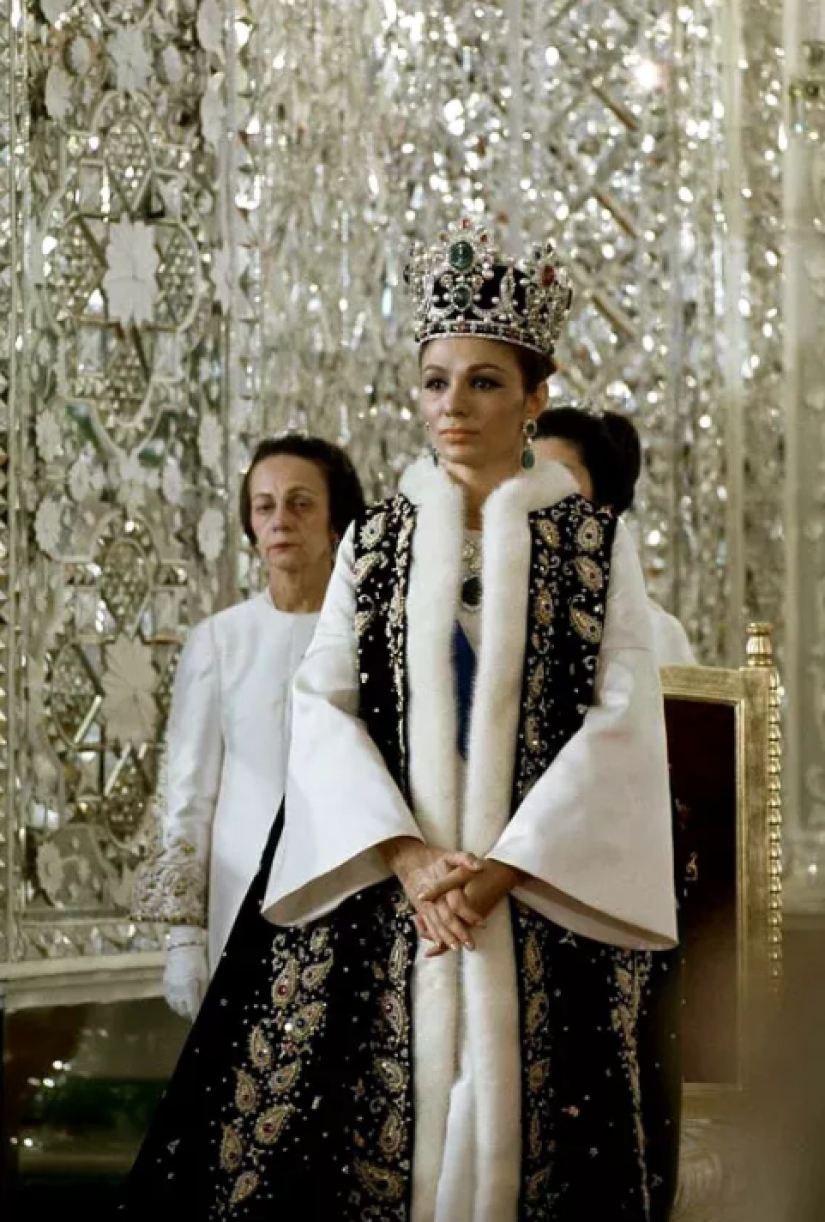
But it would be a mistake to assume that absolutely everyone is delighted with the queen. Muslim religious figures led by Imam Khomeini believed that the king and his wife were plunging the country into the abyss of Western debauchery. The goal of these people was to overthrow the progressive Shah and establish their rule based on the values of Islam.
In this situation, it was impossible to make mistakes, and for many years Mohammed skillfully maneuvered between the interests of religious communities and the state. But in September 1978, he made a mistake that became fatal for him and changed the history of modern Iran. On one of the autumn days, another demonstration gathered near the walls of the Shah's palace demanding the abdication of the shah.
Mohammed got tired of it, and he sent the military to disperse the crowd, giving them complete freedom of action. After a series of provocations, soldiers opened fire on the crowd and hundreds of citizens died from bullets and stampede. After that, it was impossible to stop the opposition — the riots first swept the capital, and then spread throughout the country.
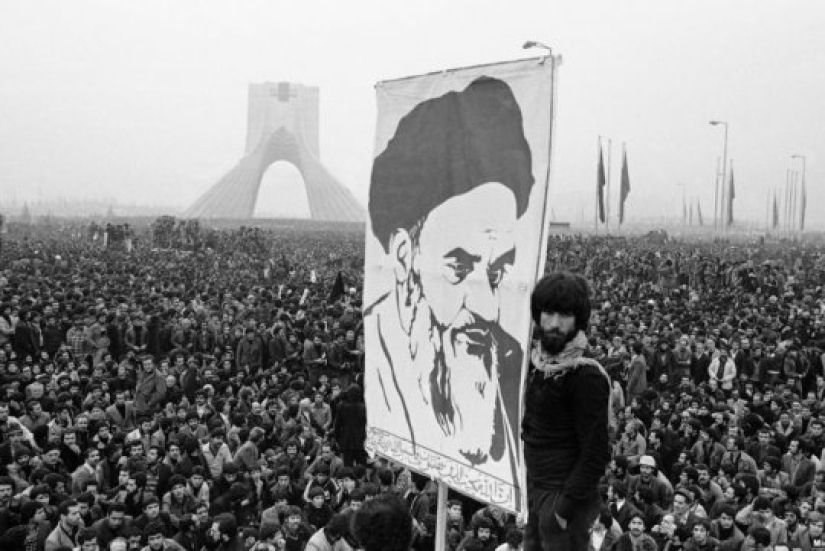
It got to the point that even the army betrayed the shah, and the power of the legitimate ruler, without support, fell. This happened in December 1978. The Pahlavi family urgently left the country, where they were in mortal danger. Life in a foreign land was hard for the Shah's family, and Mohammed himself, who was no longer young and seriously ill, suffered especially.
Farah later said that just a few days after fleeing, she was given a letter from the revolutionaries. They offered her a disgusting deal — to poison her husband in exchange for permission to return to Iran with the children. The letter of the villains remained unanswered.
In 1980, Mohammad Reza Pahlavi died of cancer, which was a strong blow for the Queen. But fate has prepared other trials for this woman to try to break her will. In 2001, her 31-year-old daughter Leila died in London from a drug overdose, and in 2011, the heir to the throne, 44-year-old Ali-Reza committed suicide in Boston.
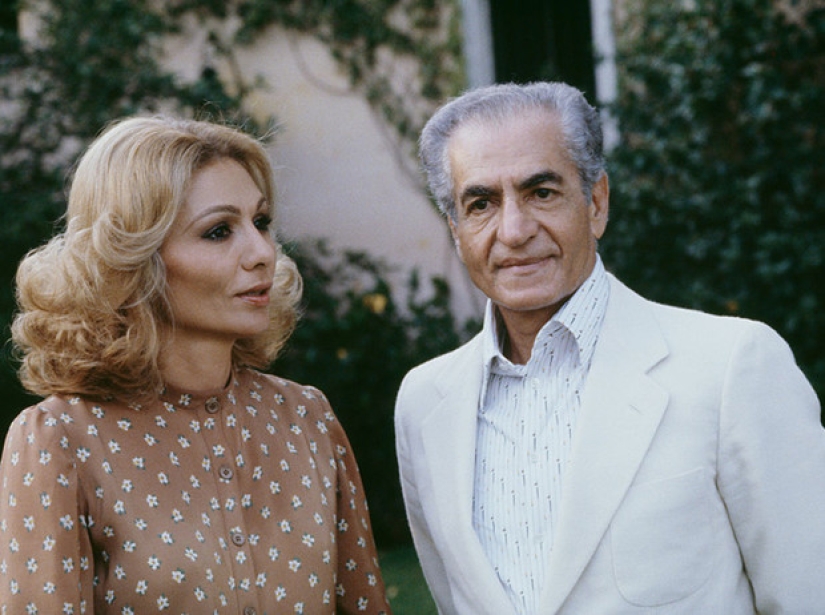
Farah has always said that her children could not overcome the childhood stress they received during the Islamic Revolution. The Queen herself, although she has not been to Iran since 1979, speaks of strong concern about the fate of her country.
The last Empress is especially saddened by the situation of Iranian women, for whose rights she gave a lot of strength in her time. With her, an unheard-of thing happened once — the number of women enrolled in universities exceeded the number of men! Of course, now it could only be remembered.
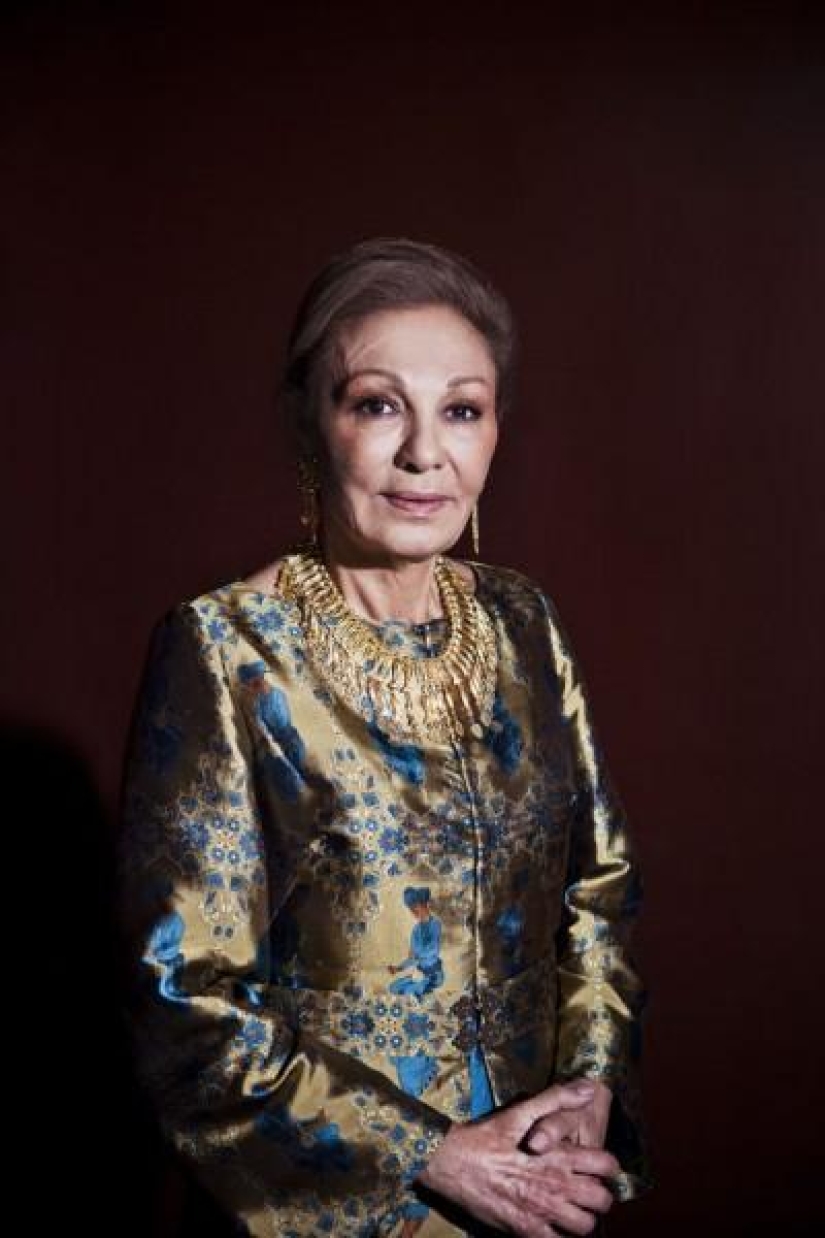
She closely follows the exploits of compatriots who have not reconciled themselves to returning to the Middle Ages and are fighting for their rights and freedoms. Farah says that the women of her country are very brave and there are many among them who could not be brainwashed by imams. She hopes that one day their struggle will be crowned with success and they will get what they wanted. Farah is full of optimism — "This light is capable of defeating any darkness. Even if I'm not there, my children and grandchildren can experience the fruits of these efforts."
Recent articles

In some countries of the world there are such unusual laws that they may even seem like fiction to someone. But all this is ...

For many years, Norma Jean Mortenson, whom we know better as Marilyn Monroe, did not even suspect that she had a sister. When they ...

The buffet, as an integral part of the "all inclusive" tourist format, is probably familiar to everyone. Even those who ...